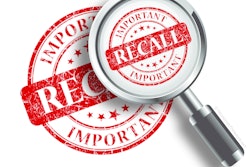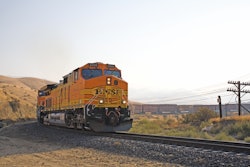Jon Goldberg, founder and Chief Reputation Architect at New York City-based Reputation Architects, has years of experience working with companies, non-profits and government entities to help shield them from reputational harm and transform adverse situations into opportunities that portray leadership.
He recently shared a few insights on the topic of recall prevention and response with Food Logistics.
“Companies need to foster risk-sensitive cultures as part of their recall planning and reputation protection efforts,” urges Goldberg. “While having well thought-out and battle-tested recall and reputation/brand protection plans is essential today, they only go so far. Developing a culture in which people are focused on identifying and properly managing risks and keeping crises from happening in the first place is even better. Building this risk-sensitive culture means fostering an environment in which people actively look for risks to the company and its brand as part of their everyday work, and take them into account in their decision-making.”
Of course, “This sort of risk-sensitive culture doesn’t just happen,” says Goldberg. Rather, it must be nurtured by the following, he says…
Communicating clear expectations — Employees at all levels need to know what is expected of them when it comes to safeguarding the brand. In a strong risk-sensitive culture, people understand the process for escalating issues they identify, and the potential costs — reputational and and otherwise — of not doing so.
Making risk management a central part of planning and decision-making — At a minimum, employees should have a simple framework to guide them in thinking through the risks a particular decision could present, whether it’s a change in ingredients, a label revision, or alterations to a manufacturing process.
Modeling sound risk management behaviors — Managers must serve as risk management role models by being available and supportive when an employee raises potential problems. The focus needs to be on addressing the issues, not on pointing fingers or covering tracks. The time to analyze what happened will come later. Taking the steps necessary to show that the brand is responding openly, effectively and in the best interests of consumers is what separates winners from losers when product issues loom.
Moreover, Goldberg still sees a lot of confusion when it comes to social media and how organizations deal with product issues and recalls.
“Social media is the most potent source of real-time consumer insight and feedback a company can have in times of crisis, and many are still missing the boat,” he says bluntly. “Most companies have Facebook pages and Twitter accounts that they can use to great effect to broadcast vital information to consumers,” he says. “But, broadcasting is one-way. The real power of social comes from listening to and engaging with stakeholders. Social channels are often the first place the early warning signs of a crisis can be detected. Too many companies miss those signals until it’s too late. Effective social media listening puts food companies a step ahead of problems with their products and take the necessary actions, including recall, while they can still be contained.”
Finally, Goldberg says that, “When communicating with the public about risks, companies need to speak the right language. Effective risk communication serves to bridge between the scientific, quantitative, probabilistic language ‘experts’ use to assess and describe risk, and the qualitative, intuitive, highly personal language individual consumers use to assess those same hazards. The inherent tension between a company’s legal and communications teams only adds to the stress. Statements laced with technical and legal qualifiers may be entirely accurate and impervious to challenge in a courtroom. But, they will be picked apart and ridiculed in the court of public opinion long before that day comes.”



















